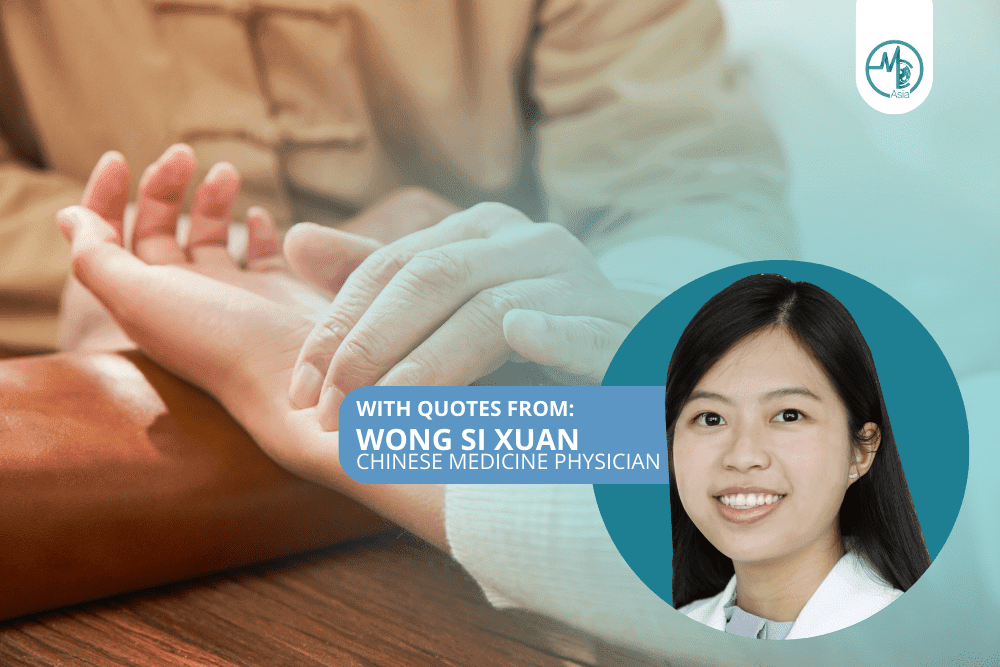Traditional Chinese Medicine (TCM) stands as a testament to thousands of years of medical knowledge and practice.
Drawing from nature and the human body’s inherent rhythms, traditional chinese medicine offers holistic approaches, from herbal remedies to acupuncture, aiming to balance the body’s vital energy or “Qi.” We learn more about this traditional medicine with Eu Yan Sang Physician Wong Si Xuan.
A Glimpse into Traditional Chinese Medicine
TCM is rooted in the ancient philosophy of Daoism and revolves around the principles of Yin and Yang, the Five Elements, and the human body’s Qi. Ms Wong added that “TCM employs a holistic view of the human body, where all its components are part of an interconnected system. Each of our organs depends on and constrains each other physiologically and can also affect each other pathologically. The balance of Yin, Yang, and Qi — also known as vital energy — is a prerequisite for good health.”
The power of Qi
Ms Wong explained what Qi is. She stated, “Qi is the vital life energy which flows through the body’s pathways, also known as meridians. It sustains physical and mental processes and allows us to carry out our daily activities. TCM practitioners rely on an individual Qi’s quantity and flow to identify imbalances or blockages that may be causing illnesses. TCM therapies such as acupuncture, herbal medicine and dietary adjustments aim to restore sufficient and smooth flow of Qi to promote healing and overall health.”
Diagnosing Illnesses
Ms Wong explained how a diagnosis is done. She stated that “TCM practitioners diagnose illnesses through a holistic assessment which considers multiple factors. This is done through a combination of observation, inquiry, pulse examination, tongue inspection, and physical examination to gather complete information about a patient’s condition. A thorough history of the ailment and other lifestyle habits and evaluation of pulse strength and rhythm are used to identify patterns of disharmony, while the condition of the tongue, including its colour, coating and shape, provides insights into organ function. When combined, these methods allow TCM practitioners to identify imbalances leading to disease. These patterns serve as a guide for personalised treatment plans to restore balance and promote health.”
Common Ingredients in TCM
The rich pharmacopoeia of TCM boasts thousands of medicinal substances—primarily plant-based but also incorporating some minerals and animal products. Some widely used ingredients include:
- Ginseng: Believed to boost energy, lower blood sugar, and cholesterol levels, and promote relaxation.
- Goji Berries: Often consumed as a tonic to strengthen the liver, purify the blood, and enhance eyesight.
- Astragalus: Touted for its immune-boosting and anti-ageing properties.
- Rhizoma coptidis: Known for its heat-clearing and detoxifying effects.
- Ginger: Used to aid digestion, reduce nausea, and fight the flu and common cold.
Ms Wong added, “Each herb has its medicinal effect. The herb’s taste (sour, bitter, sweet, salty, spicy) associates it with the different organs and meridians that it acts on. The innate warming/cooling properties of the herb (hot, warm, cool, cold, neutral) indicate its effect on the balance of Yin and Yang in the body. Through combining multiple herbs’ characteristics, TCM practitioners create personalised formulations to promote holistic healing.”
Acupuncture: A Needle for Balance
Acupuncture is one of TCM’s most renowned techniques. It involves inserting fine needles into specific body points to stimulate and balance the body’s Qi. This practice has gained global recognition and research suggests it can help:
- Relieve chronic pain: Such as headaches, back pains, and osteoarthritis.
- Improve sleep and treat insomnia.
- Reduce stress and anxiety.
- Aid in digestive issues.
- Enhance overall well-being.
The World Health Organization even recognises acupuncture as effective for treating over 30 conditions, including hypertension and adverse reactions to chemotherapy.
Embracing Tradition in Contemporary Healing
Traditional Chinese Medicine’s endurance underscores its intrinsic value. While it provides a distinct perspective from Western medicine, integrating its principles can lead to a more comprehensive healthcare approach. As interest in holistic and alternative therapies grows, TCM’s age-old wisdom continues to resonate with modern seekers of well-being. Always remember, while exploring TCM, that collaboration with qualified practitioners and informed choices ensure the best health outcomes.

